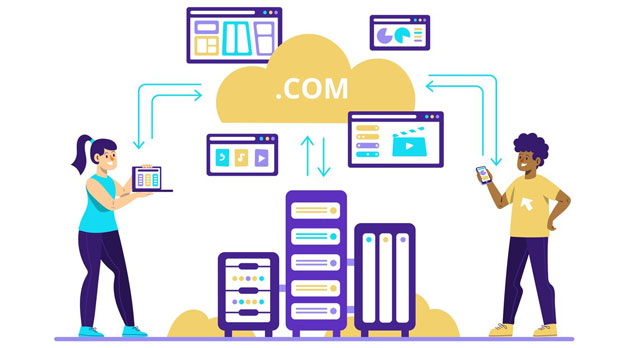When comparing free proxies and commercial proxies (dynamic residential), the speed difference is significant. Free proxies tend to be slower, often due to their limited resources, overcrowded servers, and a lack of optimization. On the other hand, commercial proxies, especially dynamic residential ones, are designed for performance, scalability, and reliability. They typically offer faster speeds because they are hosted on premium infrastructure, benefit from better management, and are not as heavily congested. Understanding the factors behind these speed disparities is crucial for users who need fast, reliable proxy services. Factors Affecting Proxy SpeedBefore diving deeper into the comparison, it's essential to understand the underlying factors that influence the speed of both free and commercial proxies. Proxy speed is affected by various aspects such as server location, infrastructure quality, bandwidth, and the level of usage congestion. - Server Location: The closer a proxy server is to the user or the target destination, the faster the connection tends to be. Free proxies often have limited server locations, while commercial proxies provide access to multiple global locations.- Bandwidth: Proxies with higher bandwidth can handle more data traffic, resulting in faster speeds. Free proxies generally have limited bandwidth, making them slower during peak times.- Congestion and Traffic: Free proxies often have more users connected at the same time, causing congestion. In contrast, commercial proxies tend to have fewer users per server, which ensures more stable and faster speeds.- Infrastructure Quality: Commercial proxies are built with high-quality infrastructure that ensures minimal latency and optimized routing. Free proxies usually lack this investment, leading to slower speeds.Speed of Free ProxiesFree proxies are often the go-to choice for individuals who need a proxy without spending money. However, they come with several limitations that directly impact their speed. These limitations include:- Overloaded Servers: Free proxies typically support a large number of users, leading to overcrowded servers. When too many users are trying to access the same server, the proxy speed drops significantly.- Limited Resources: Free proxies have fewer resources, such as bandwidth and processing power. As a result, they are often slower and less reliable.- Lack of Optimization: Free proxies may not be optimized for high-speed performance. Without regular maintenance or tuning, the servers can experience high latency, packet loss, and inconsistent speeds.- No SLA (Service Level Agreement): Free proxies often lack any guarantees on speed, uptime, or support. Users are left with no recourse if the speed is slow or the service is unavailable.As a result, users who rely on free proxies often experience slower browsing speeds, longer load times, and inconsistent performance, especially during peak usage hours.Speed of Commercial Proxies (Dynamic Residential)Commercial proxies, particularly dynamic residential proxies, are designed to provide higher speeds and more reliable connections. These proxies are typically hosted on premium networks and come with several advantages:- Optimized Infrastructure: Commercial proxies benefit from high-quality infrastructure with robust servers, high bandwidth, and low latency. This optimization ensures fast and stable connections.- Geographically Distributed Servers: Dynamic residential proxies are often distributed across multiple locations worldwide. This allows users to choose a server closest to their target destination, improving speed and reducing latency.- Scalability and Load Balancing: Commercial proxies have better load balancing techniques. Since dynamic residential proxies often utilize a vast pool of residential IPs, the servers are less likely to be overloaded, which ensures consistent performance.- Service Level Agreements: Many commercial proxy services offer SLAs that guarantee uptime and performance, which includes speed-related metrics. This is particularly important for businesses or individuals who rely on fast and consistent proxy speeds.Dynamic residential proxies typically outperform free proxies in terms of speed, as they are less affected by overcrowding, and are optimized for high performance.Speed Differences: A Direct ComparisonWhen comparing the actual speed difference between free proxies and commercial dynamic residential proxies, the disparity is evident. While the specific speed can vary based on various factors such as the number of users, the proxy provider’s infrastructure, and the location of servers, the general trend is that commercial proxies deliver significantly faster speeds.1. Latency: Free proxies often experience high latency due to poor routing and limited infrastructure. In contrast, dynamic residential proxies offer low latency, ensuring faster connections and quicker data retrieval times.2. Throughput: Commercial proxies have higher throughput, meaning they can handle more data transfer at once without slowing down. Free proxies, on the other hand, struggle to maintain high throughput, especially during peak hours.3. Connection Stability: Free proxies are more likely to experience interruptions or slowdowns due to overcrowding and poor resource allocation. Dynamic residential proxies, however, maintain a more stable connection, with less frequent disruptions and more consistent speeds.Overall, dynamic residential proxies are consistently faster than free proxies, and they offer a far more reliable and stable connection.Why Speed MattersUnderstanding the speed difference between free and commercial proxies is crucial, especially for those who require fast and reliable internet access. Speed is essential for a variety of reasons:- Web Scraping and Data Harvesting: High-speed proxies are crucial for web scraping, as slow proxies can result in timeouts and incomplete data collection.- Online Privacy and Security: Users who rely on proxies for anonymity and security require fast speeds to avoid interruptions in their browsing experience.- E-commerce and Market Research: Fast proxies are essential for e-commerce businesses and market researchers who need real-time data or need to interact with websites quickly.If the speed is too slow, users might find that the proxy is ineffective for their tasks, especially in time-sensitive environments.The speed difference between free proxies and commercial dynamic residential proxies is significant. Free proxies tend to be slower due to their limited resources, poor infrastructure, and overcrowded servers. In contrast, dynamic residential proxies offer optimized performance, faster speeds, and greater reliability, making them ideal for users who need high-speed proxy services.For users who require fast and consistent connections, especially for tasks like web scraping, market research, or online privacy, investing in commercial proxies is highly recommended. While free proxies might be suitable for casual use, they cannot match the speed and reliability that dynamic residential proxies offer. Ultimately, the choice between free and commercial proxies depends on the user's specific needs, but for those who require performance, commercial proxies are the clear winner.
Apr 18, 2025
![arrow]()




























































